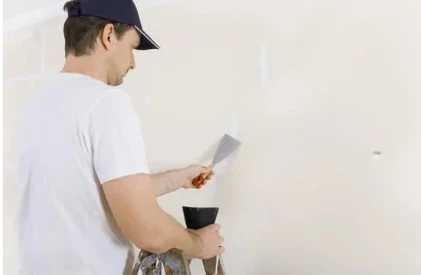Concrete is one of the most durable and widely used materials in construction. However, over time, even the strongest concrete surfaces can develop cracks, chips, or uneven areas due to weather, wear and tear, or improper installation. The good news? You don’t need to be a professional contractor to repair concrete like a pro! With the right tools, materials, and techniques, you can restore your concrete surfaces without spending a fortune.
Why Does Concrete Crack?
Before we dive into repairs, it’s essential to understand why concrete cracks. Here are some of the most common causes:
- Shrinkage – As concrete cures, it shrinks, and this can lead to cracks if not properly controlled.
- Excessive Load – Heavy vehicles, equipment, or furniture can cause concrete to crack under pressure.
- Freeze-Thaw Cycles – Water seeps into concrete, freezes, and expands, leading to cracks over time.
- Improper Installation – Poor mixing, inadequate reinforcement, or insufficient curing can lead to weak spots.
Essential Tools and Materials for DIY Concrete Repair
Before starting any repair, gather the necessary materials and tools to ensure a smooth process. Here’s what you’ll need:
Tools:
- Trowel or putty knife
- Wire brush or stiff bristle brush
- Hammer and chisel (for removing loose concrete)
- Caulking gun (for crack fillers)
- Safety gear (gloves, goggles, and a dust mask)
- Bucket and sponge
- Power washer (optional for deep cleaning)
Materials:
- Concrete patching compound
- Epoxy or polyurethane concrete crack filler
- Quick-setting cement
- Concrete bonding adhesive
- Sealant to protect repaired areas
How to Fix Different Types of Concrete Damage
1. Repairing Small Cracks
Best for: Cracks less than 1/4 inch wide.
- Clean the Crack – Use a wire brush and water to remove debris.
- Apply a Concrete Crack Filler – Use an epoxy or polyurethane filler with a caulking gun.
- Smooth the Surface – Use a putty knife to spread the filler evenly.
- Let It Cure – Allow the filler to dry completely before sealing.
2. Fixing Large Cracks and Holes
Best for: Cracks wider than 1/4 inch and holes.
- Chisel Out Loose Concrete – Use a hammer and chisel to widen the crack slightly and remove loose edges.
- Apply a Bonding Adhesive – This helps the new concrete adhere properly.
- Mix and Apply a Patching Compound – Use quick-setting cement or a concrete patching mix to fill the crack.
- Smooth and Cure – Use a trowel to level the surface and allow it to dry per the manufacturer’s instructions.
3. Leveling Uneven Concrete
Best for: Sunken or uneven driveways, sidewalks, or patios.
- Clean the Area – Remove dirt, debris, and loose concrete.
- Use a Self-Leveling Compound – Pour the compound over the uneven surface and use a trowel to spread it evenly.
- Let It Set – Allow it to dry completely before walking or driving on it.
4. Resurfacing Old or Worn-Out Concrete
Best for: Large areas with widespread damage.
- Power Wash the Surface – Remove dirt and loose material.
- Apply a Concrete Resurfacer – Use a squeegee or trowel to spread it evenly.
- Texture the Surface – Use a broom for a non-slip finish.
- Allow Proper Curing – Follow drying times for durability.
Cost-Saving Tips for DIY Concrete Repair
Want to fix your concrete without breaking the bank? Here are some budget-friendly tips:
- Buy in Bulk – Purchase materials in larger quantities to save money.
- Use DIY Concrete Mixes – Ready-made concrete patch kits can be costly; mixing your own can save you money.
- Prevent Future Damage – Seal concrete regularly to avoid cracks and extend its lifespan.
- Borrow Tools – Rent or borrow tools instead of buying expensive equipment.
When to Call a Professional
While most minor concrete repairs are DIY-friendly, there are situations where hiring a professional is the best choice:
- Deep structural cracks that indicate foundational issues.
- Large sunken areas that may require professional slab jacking.
- Extensive resurfacing of driveways or large patios.
Final Thoughts
Repairing concrete doesn’t have to be complicated or expensive. By understanding the causes of damage, using the right materials, and following proper repair techniques, you can restore your concrete surfaces like a pro. With a little effort and the right approach, your concrete will look good as new—without breaking the bank!
For professional concrete repair services, visit Concrete Pros Bend.
So, whether you’re fixing a small crack, leveling uneven pavement, or resurfacing an entire patio, you now have the knowledge and confidence to do it yourself. Time to grab your tools and start fixing!


